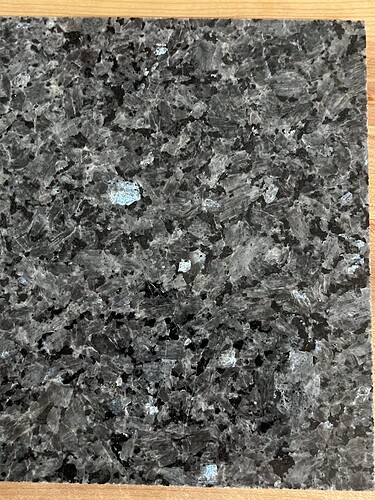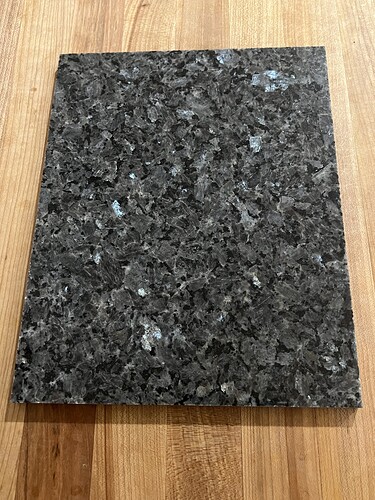TLDR: I’m making a granite bed with threaded inserts so I can do conductive probing on my nomad 3. (Mostly to practice working granite but also because it’ll be mighty convenient…hopefully it gives some folks at C3D a chuckle ![]() )
)
I’ve had my nomad 3 long enough that it’s time to start making major modifications.
I spend more time than I care to admit just finding centers and such on metal stock. (I know we’ve all come together to find a decent 3D Touch probe option but it’s not as repeatable as I’d like and conductive probing is just much faster IMO)
Previous shenanigans:
In the very beginning I did things that would make TDA cringe…just put a thin shim of plastic on the shank of my tool for probing (between the collet and the tool, that can’t be good for collet life or precision!)
Then I wised up and used PEEK bolts for my work holding and non-conductive shims between the bed and stock. It works surprisingly well but again, just a hassle.
Current shenanigans:
Now that I’ve got some real metrology tools, it’s time to make a new bed for my little nomad.
Requirements:
Completely non-conductive without the need for coatings or shims.
Same threaded hole pattern as SMW table.
At least as rigid as SMW table.
Threads that can handle as much torque as aluminum 6061 without deformation or pullout.
The same size as the SMW table.
Extras credit:
A ~1 inch bore strategically placed to allow milling on the end of bar stock. (This has been discussed on the forum but to my knowledge, never done)
The Idea:
A granite bed with precisely located threaded inserts.
I’ve been practicing my granite work recently by bringing the tops and bottoms of small (extremely cheap) surface plates into parallel. Next up I’d like to practice hole making in granite. That brings us nicely to a threaded granite surface plate…I think.
Steps:
- Find a suitable piece of granite in thickness and cut to size
- Make that granite real flat
- Make that granite real parallel
- Create holes to anchor the plate to the nomad.
- Drill oversized bed of holes to allow for threaded inserts (anchored with appropriate adhesive/epoxy)
- Shim table since I won’t be able to surface it (had to do this with the SMW table as well, it’s not too bad really)
The threads are where we have a few options:
I could just plug these holes with slugs of 7075 or brass(it’s pretty), lap them to flatten the surface, then bore and tap with the nomad while the bed is in situ.
Or I could spend a bunch more money to get nice stainless steel inserts. Take the SMW bed, thread bolts though each hole, put the inserts on the bolts, and drop the entire bed of inserts into the granite base in one go. Essentially transferring the threaded hole locations (and precision) from the SMW table to the granite table.
I’m thinking oversized slugs that are bored and tapped will be the way forward unless I can find a cheap source for nice threaded inserts…blank slugs would give me a good opportunity to figure out thread milling I suppose.
Anyway, I’ll keep the topic updated as I progress. I know there are a few other projects I’ve left hanging but I plan on getting back to them shortly as well.

